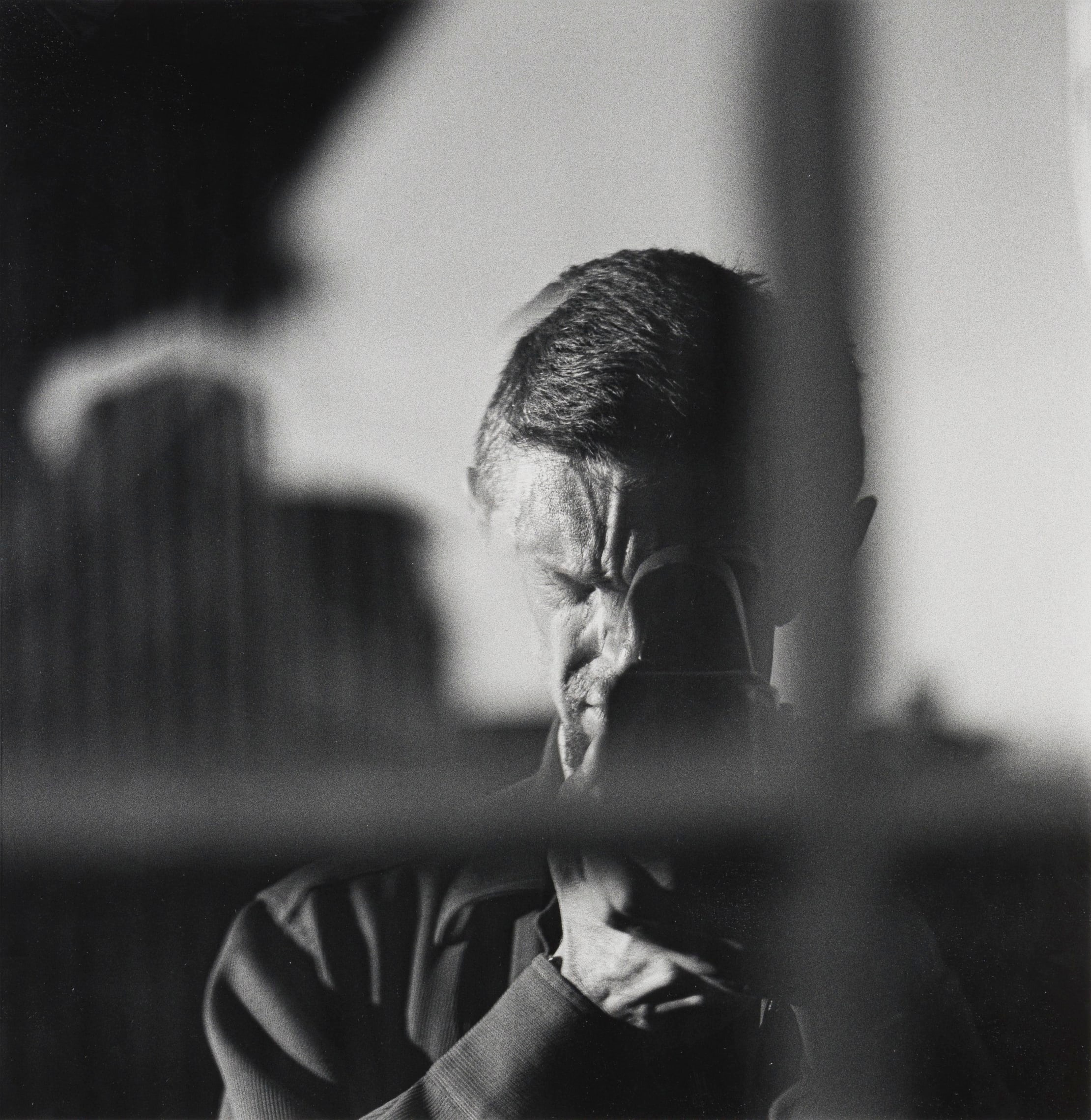David Goldblatt

In 2015, Goldblatt’s retrospective The Pursuit of Values opened at the Standard Bank Gallery in Johannesburg. Curated by Neil Dundas, the exhibition and accompanying publication were intended “to examine how Goldblatt’s life’s work has explored and expressed the values of South Africa and its peoples,” and offered an overview of the photographer’s seven-decades-long career. Its earliest image, Couple in the Library Gardens, Johannesburg (1948), coincided with the inaugural legislation of apartheid; its last, with the removal of the statue of Cecil John Rhodes at the University of Cape Town (April 9, 2015). Included in the survey was a selection of previously unseen works, among them this early self-portrait taken before the publication of Goldblatt’s first photobook, On the Mines, in 1973. It alone offered a direct representation of the photographer, showed the artist’s hand; the one who sees and the instrument (the camera) by which he sees. It stood as a metonym for the invisible figure present in all Goldblatt’s images; the figure that selects, that frames, that sets in sequence his photographs. Though the edition of this self-portrait is listed as 10, only four impressions were printed.
b.1930, Randfontein; d.2018, Johannesburg
“I was drawn,” the late photographer David Goldblatt wrote, “not to the events of the time but to the quiet and commonplace where nothing ‘happened’ and yet all was contained and immanent.” A preeminent chronicler of South African life under apartheid and after, Goldblatt bore witness to how this life is written on the land, in its structures or their absence. Unconcerned with documenting significant historic moments, his photographs stand outside the events of the time and yet are eloquent of them. Through Goldblatt’s lens, the prosaic reveals a telling poignancy. Even in those images that appear benign, much is latent in them – histories and politics, desires and dread. His photographs are quietly critical reflections on the values and conditions that have shaped the country; those structures both ideological and tangible. Among his most notable photobooks are On the Mines (1973), Some Afrikaners Photographed (1975), In Boksburg (1982), The Structure of Things Then (1998), and Particulars (2003).